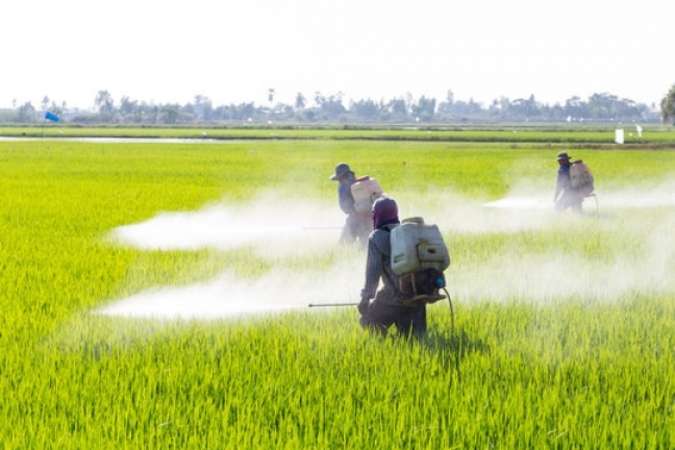Logistics include not only transporting regular goods but also dangerous goods. Even though they are dangerous, many goods are essential like petrol, paints, adhesives, etc. But some are extremely dangerous like ammunitions that the logistic services need to follow many rules strictly. Dangerous goods may cause many reasons to be loss of peoples’ lives, property, and environment. Hence, not all of them can safely handle and transport hazardous goods known as hazmat in the US. Only the best tech-enabled 3PL logistics like Go Hazmat Hub can do it with a qualified, trained team.
This article will discuss the many rules and regulations for dangerous goods in logistics and tips to transport them safely.
UN recommendations for dangerous goods in logistics
The UN recommendations for transporting dangerous goods in the UN Model Regulations. United Nations Subcommittee of Experts prepared these recommendations. These recommendations cover transporting dangerous goods by all transport modes except bulk tankers. The UN has classified dangerous goods into nine classes with many divisions and packaging groups. A UN number is a four-digit code for the most common dangerous goods for easy identification worldwide. Hence all dangerous goods in logistics will have generic codes like UN1993 which specifies it as flammable liquid. All the countries implement the UN recommendations by their regulatory bodies, and in the US, it is DOT or Department of Transportation.
US DOT rules for dangerous goods in logistics
Since millions of tons of dangerous goods are transported across the US, huge risks are involved. Hence, all logistical services should strictly comply with DOT or department of transportation hazmat or dangerous goods regulations. And companies failing to do so will have to face fines and serious consequences that may even lead to their closure. Apart from transportation, the regulations include documentation, packaging, and hazmat labeling. Hence only the best logistic services like Go Hazmat Hub will transport hazmat or dangerous goods across all states.
HMR rules for dangerous goods in logistics
US DOT ISSUED the HMR, or Hazardous Materials Regulations govern the transportation hazmat in foreign commerce, interstate, and intrastate. The regulations have specific requirements for hazmat transportation to ensure public safety and for those handling it. Most hazmat transportation requirements are in Title 49 CFR or Code of Federal Regulations for all modes, including air, water, rail, and highway. HMT or hazardous material transportation act enacted in 1975 designates dangerous goods to any particular form or quantity. It empowers the Secretary of Transportation for the safety of the hazmat that may cause unreasonable risk to safety, property, and health. HMTA subdivides the dangerous materials into four fundamental areas that include.
1. Identification and classification of hazardous materials in 49 CFR or Code of Federal Regulations of parts 101, 106 & 107
2. Hazard communication that includes shipping papers, labels, placards, and markings for communicating the dangers of hazmat for emergency responders in 49 CFR part 172
3. Packaging requirement in 49 CFR parts 173, 178, 179 and 180
4. Operational rules 49 CFR Parts 171, 173, 174, 175, 176, and 177
HMTA also includes compliance of EPA or Environmental Protection Agency in 40 CFR 110 for discharge of oil and designation of hazardous substances in 40 CFR 116.
Go Hazmat Hub is one of the leading dangerous goods logistic services in Florida that comply with all the US DOT regulations with certified and trained professionals.
Tips for dangerous goods in logistics
All companies need to follow all the above UN recommendations incorporated in the HMT Act in 1975 and amended in 1990 and 1996. The statute encourages uniformity across all local and state highway routing regulations. Also, the regulations develop criteria for issuing federal permits for all hazmat carriers for regulating their dangerous goods transportation. And those failing to do so will end in various fines legal issues, including the closure of the companies. The following tips will help ensure compliance with the safe transportation of dangerous goods.
· Knowing the details of the dangerous goods for transportation is vital. Many products like pants, batteries, nail polishers, and tennis balls are considered dangerous goods as they contain chemicals under the HMT Act.
· For global transport, it is essential to follow IMDG or International Maritime Dangerous Good code to protect the crew handling it and prevent marine pollution.
· Should follow proper packaging protocols and procedures with the suitable materials and in places that are easily and quickly accessible in case of any emergencies
· Make packaging airtight suitable for dangerous goods to be safe inside without any leak or damage and prevent any contamination of it with moisture, water ingress, heat, etc.
· Should label the packaging with the correct UN and IMDG code for international shipping and follow all US DOT labeling requirements in the US
· Must use proper documentation during transportation of dangerous goods that includes DG packaging list or declaration, DG request, MSDS, DG manifest, TREM card, and the details of the goods nature, among others.
· Should ensure proper training and updating of the rules and regulations by the US for all the people involved in handling and transporting dangerous goods
· Must consider splitting of dangerous goods from the other regular goods during transportation o avoid any unforeseen incidents that could damage the entire shipment
· Categorize the dangerous goods as ADG or accessible dangerous goods, which enables to handle the package during transit and IDG or inaccessible dangerous goods that are not accessible
Read More: 5 Tips for Businesses to Survive in Today’s Technology-Dependent Era
Go Hazmat Hub for many years are one of the leading dangerous goods logistic services in the US. They have certified and trained professionals to handle all classes of dangerous goods across the US and even to other countries. The above facts, regulations, and tips will help decide the proper dangerous goods logistics.
















